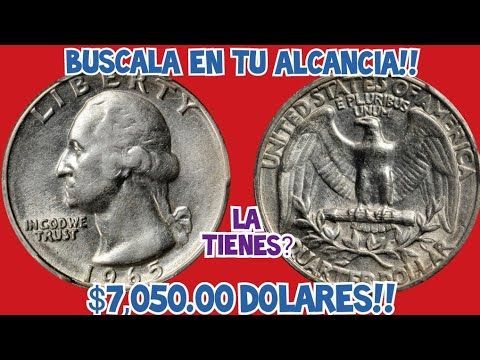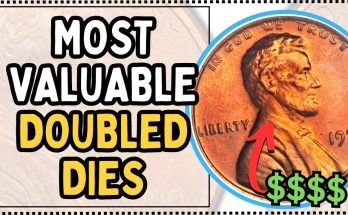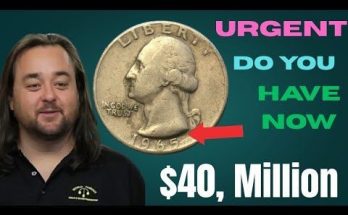The year 1965 is one of the most significant and confusing dates in modern American coinage, marking the pivotal “Great Silver Melt” and the official end of silver circulation in quarters and dimes. After 1964, the U.S. Mint transitioned the Washington Quarter from its classic 90% silver composition to a copper-nickel clad composition (75% copper, 25% nickel over a pure copper core). This is why most 1965 quarters you find in pocket change are common and generally worth only their 25-cent face value, or maybe a dollar or two if they are in excellent, uncirculated condition.
However, the staggering value of $7,050.00 highlighted in the caption refers to one of the rarest and most valuable mint errors in the Washington Quarter series: the 1965 Quarter Struck on a 90% Silver Planchet.
The Transitional Error: Silver vs. Clad
The high value is due to a rare and fascinating error that occurred during the U.S. Mint’s massive shift in production. Despite the new law mandating the use of copper-nickel clad planchets starting in 1965, a very small number of leftover 90% silver planchets, which were intended for 1964 quarters, were mistakenly fed into the presses and struck with the 1965 date.
This makes the silver 1965 quarter an extremely coveted “transitional error coin”. In fact, one such coin, graded AU-53 (About Uncirculated), was sold at auction in 2014 for exactly $7,050.00. Other examples of this rare error have sold in a range from $7,050 up to $16,800, depending on their condition and certified grade.
How to Check Your 1965 Quarter for the Silver Error:
The difference between a common 1965 clad quarter and the highly valuable silver error can be determined by a few key tests:
- Weight Test: A standard 1965 clad quarter weighs approximately 5.67 grams. A 1965 silver error quarter, struck on the older planchet, will weigh approximately 6.25 grams. A slight variance is normal, but a significant difference is the first major clue.
- Edge Test: Look closely at the coin’s edge. A normal 1965 clad quarter will clearly show a copper stripe sandwiched between the two silver-colored layers. The rare 90% silver error coin will show a solid silver-colored edge with no visible copper line.
- “Ring” Test: Dropping a common clad quarter produces a dull “clunk,” whereas a 90% silver coin produces a distinct, higher-pitched “ring”.
Other Valuable 1965 Quarters
While the silver error is the most famous, other scarce minting varieties from 1965 can also command high prices:
- High-Grade Regular Strikes: Quarters that have been kept in pristine, untouched condition (uncirculated or Mint State—MS) for nearly six decades are extremely rare. An MS-68 grade 1965 quarter is one of the highest known, and its value has been estimated to reach as high as $5,250 or even $16,500.
- Doubled Die Obverse (DDO): Look for doubling on the lettering in “LIBERTY,” “IN GOD WE TRUST,” and the date “1965”. Sharply visible Doubled Die Quarters can be worth hundreds or even thousands of dollars in high grades.
- Double Tail Error: An exceptionally rare error where the reverse (tail side) design was struck on both the obverse and reverse, with past examples selling for up to $80,000.
So, don’t overlook those 1965 quarters! Grab your magnifying glass and a small scale, and check your coin jar—you might just find a small piece of history worth a small fortune! If you suspect you have one, do not clean it, and consult a certified coin grader like PCGS or NGC for professional authentication and valuation.



